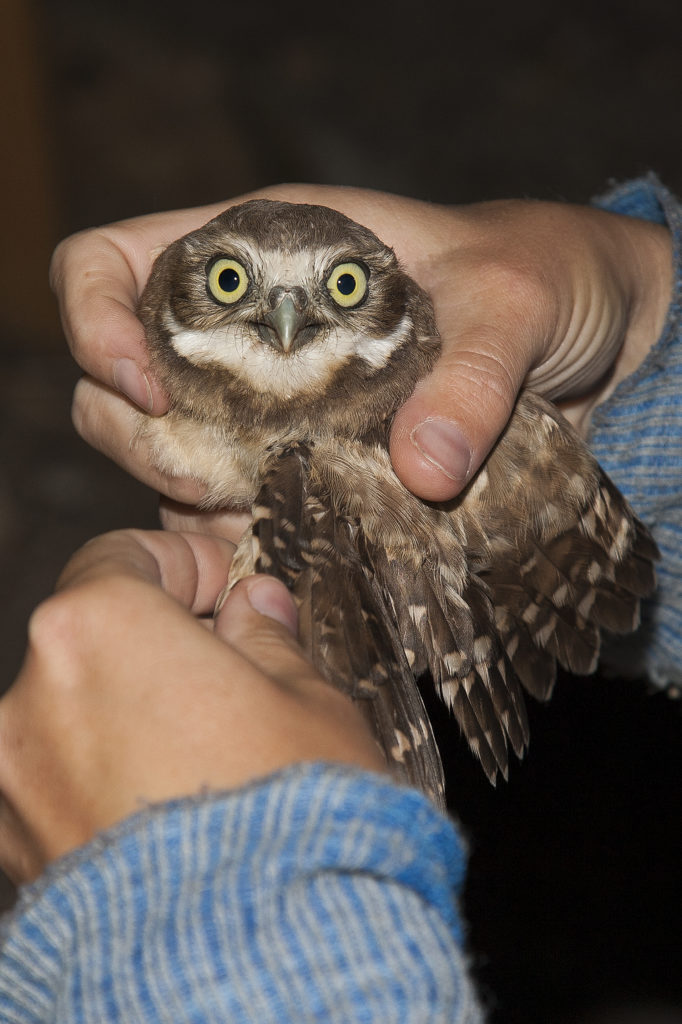
San Diego Zoo Global scientists are celebrating a major conservation milestone for the organization’s Burrowing Owl Recovery Program. One of two burrowing owls released into their native range have successfully reproduced—and they have produced the program’s first chicks to be hatched in the wild. The mother owl, known as “Blue X,” hatched at the San Diego Zoo Safari Park’s Bird Breeding Complex (BBC) in 2018. The father owl, known as “B06,” is the offspring of birds that were translocated from Otay Mesa, CA. to the Rancho Jamul Ecological Reserve, as part of an effort to establish additional burrowing owl breeding nodes in San Diego County. The chicks represent new hope for a species whose population is in decline.
“We are thrilled to see that our conservation action is resulting is successful breeding of this important species,” said Susanne Marczak, senior research coordinator for San Diego Zoo Global. “This is the first test of our ability to release birds from the program, have them stay at this conservation site, breed, and raise their chicks so that they are wild born. This gives us tremendous hope.”

Western burrowing owls are small, long-legged birds that live in open landscapes of North and South America. Unlike other owl species that live in trees, these owls make their homes in abandoned California ground squirrel burrows, prairie dog burrows or rattlesnake dens. They use their long legs to further excavate these underground tunnels, creating enough room to store food and lay eggs. As their numbers continue to decline throughout western regions of North America, the state of California has listed them as a Species of Special Concern due to multiple factors, including continued habitat loss.
In addition to the multiagency Burrowing Owl Recovery Program, San Diego Zoo Global is asking the public to help conservation researchers save burrowing owls in San Diego County by viewing and classifying photos online. Anyone with a computer or a smartphone is invited to visit wildwatchburrowingowl.org on Zooniverse, the largest online platform for crowdsourced volunteer research. Once there, volunteers can help sort through thousands of photos from remote-activated trail cameras—normally only seen by conservation scientists—and document the behavior of a family of western burrowing owls as they set up their burrows, hatch and raise chicks, catch prey and protect their domain. Volunteer “citizen scientists” who participate in Wildwatch Burrowing Owl provide crucial assistance to researchers and save them valuable time, allowing scientists to move forward with their conservation work faster and take full advantage of a wealth of conservation data.
Burrowing owl watchers are also invited to view San Diego Zoo Global’s online Burrowing Owl Cams—a live video feed from the San Diego Zoo Safari Park showing a pair of off-exhibit burrowing owls as they establish and manage their burrow. The Aviary Cam and Burrow Cam are now viewable online at sdzsafaripark.org/cams/burrowing-owl-cams. Along with being able to watch the birds’ above-ground activities, viewers are also led into the dark to witness what goes on inside the birds' underground home, where eggs are incubated and chicks are raised.




